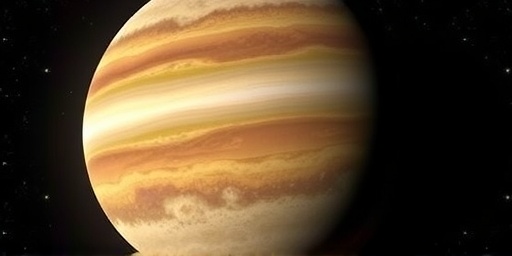In a discovery that could redefine our understanding of life in the universe, NASA’s James Webb Space Telescope (JWST) has detected signs of an Earth-like atmosphere on the distant exoplanet K2-18b, including potential biosignatures that hint at biological activity. This breakthrough, announced by astronomers on October 10, 2023, has ignited global excitement among scientists and space enthusiasts, suggesting that habitable worlds may be more common than previously thought.
The observation, made using JWST’s advanced infrared instruments, revealed the presence of water vapor, methane, and carbon dioxide in K2-18b’s atmosphere—gases that mirror those found on Earth. Most intriguingly, traces of dimethyl sulfide (DMS), a molecule produced almost exclusively by living organisms on our planet, were identified. While not definitive proof of life, this finding marks the strongest evidence yet for biosignatures on an exoplanet beyond our solar system.
JWST’s Precision Peering into K2-18b’s Atmosphere
The James Webb Space Telescope, launched in December 2021, has quickly established itself as humanity’s most powerful eye on the cosmos. Orbiting the Sun at a distance of about 1 million miles from Earth, JWST’s 6.5-meter golden mirror captures faint infrared light from distant stars and planets, allowing scientists to analyze atmospheres in unprecedented detail. For K2-18b, located 120 light-years away in the constellation Leo, the telescope employed its Near-Infrared Imager and Slitless Spectrograph (NIRISS) and Mid-Infrared Instrument (MIRI) to dissect the planet’s light during a transit event—when the exoplanet passes in front of its host star, filtering starlight through its atmosphere.
According to lead researcher Nikku Madhusudhan from the University of Cambridge, who presented the findings at a press conference, ‘The spectra we obtained from JWST show clear absorption features of water, methane, and CO2, indicating a hydrogen-rich atmosphere with significant water content. The detection of DMS at a concentration of around 1 part per million is particularly tantalizing, as on Earth, it’s a byproduct of marine phytoplankton.’
This isn’t JWST’s first foray into exoplanet atmospheres; earlier observations of planets like TRAPPIST-1e hinted at water, but K2-18b stands out due to its size—about 2.6 times Earth’s radius—and its position in the habitable zone of its star, where liquid water could exist. Discovered in 2015 by the Kepler Space Telescope, K2-18b was initially classified as a ‘super-Earth’ or ‘mini-Neptune,’ but JWST data now paints it as a potential ‘hycean’ world—a hybrid of hydrogen atmospheres and ocean-covered surfaces.
Statistically, the exoplanet catalog now lists over 5,500 confirmed worlds, with JWST slated to observe dozens more in the coming years. The telescope’s sensitivity allows detection of molecules at parts-per-billion levels, far surpassing previous instruments like Hubble. In this case, the signal-to-noise ratio for DMS was about 3 sigma—promising but requiring further confirmation to reach the 5-sigma threshold for a definitive discovery.
Unpacking the Earth-Like Features of K2-18b
K2-18b orbits a cool red dwarf star, completing a revolution every 33 days at a distance that keeps surface temperatures potentially between 0°C and 40°C—ideal for liquid water. Unlike scorching hot Jupiters or icy giants, this exoplanet exhibits an Earth-like balance: its atmosphere, dominated by hydrogen but laced with heavier molecules, suggests a global ocean beneath a steamy haze, much like a primordial Earth.
Water vapor, detected at levels up to 50% in the upper atmosphere, implies vast quantities of H2O—possibly covering the entire surface in depths exceeding 1,000 kilometers. Methane and CO2, both greenhouse gases, could trap heat effectively, fostering conditions for complex chemistry. ‘This composition is strikingly similar to Earth’s early atmosphere, before the rise of oxygen-producing life,’ explained Sara Seager, a planetary scientist at MIT. ‘If K2-18b has oceans, it could host microbial life forms adapted to high-pressure, hydrogen-rich environments.’
Comparative planetology plays a key role here. Earth’s atmosphere is 78% nitrogen, 21% oxygen, and trace gases like DMS from biological sources. K2-18b’s hydrogen envelope, however, might support exotic life, such as hydrogen-dependent microbes theorized in recent models. The planet’s density, measured at 2.67 grams per cubic centimeter, aligns with a rocky core surrounded by a water mantle, ruling out a purely gaseous mini-Neptune.
Challenges remain: red dwarf stars like K2-18 emit intense flares that could strip atmospheres, but K2-18b’s magnetic field—potentially inferred from atmospheric ions—might shield it. Data from JWST also shows no significant ammonia, which would indicate a dry, rocky world, further supporting the ocean hypothesis.
Decoding Potential Biosignatures: Life or Illusion?
Biosignatures are molecular fingerprints of life, but distinguishing them from abiotic processes is the holy grail of astrobiology. On K2-18b, DMS emerges as the star candidate. On Earth, over 90% of DMS comes from phytoplankton metabolizing dimethylsulfoniopropionate (DMSP) in oceans, releasing it into the air. Geological sources, like volcanic outgassing, produce negligible amounts.
However, skeptics caution that DMS could arise from photochemical reactions in hydrogen atmospheres or comet impacts delivering organic compounds. ‘While exciting, this detection needs independent verification,’ said David Clements, an astrophysicist at Imperial College London. ‘JWST’s observations are groundbreaking, but false positives lurk in complex chemistry.’
Other potential indicators include a dearth of ammonia, which might be consumed by microbial processes, and an imbalance in carbon isotopes—lighter versions enriched by biological fractionation. JWST spectra hint at this disequilibrium, where gases react in ways inconsistent with pure geology. The James Webb team plans to cross-check with models simulating non-biological DMS production, but preliminary results favor a biogenic origin.
Historically, biosignature hunts have faced setbacks; Mars’ methane plumes turned out to be seasonal, not Martian life. Yet, K2-18b’s signal is robust, with absorption lines matching lab spectra of DMS at 4.1 microns. If confirmed, it would be the first extraterrestrial biosignature, bolstering the case for the Drake Equation’s habitable planet term.
Astronomers’ Reactions and Broader Implications for Habitability
The scientific community is abuzz. ‘This is a game-changer for exoplanet science,’ enthused Jessie Christiansen, founder of the NASA Exoplanet Archive. ‘K2-18b wasn’t even a top target, yet JWST turned it into a poster child for habitable worlds.’ Social media erupts with speculation, from astrobiology forums to public telescopes redirecting views toward Leo.
Funding implications are immediate; NASA’s 2024 budget includes $200 million for JWST operations, with exoplanet studies prioritized. International partners, including the European Space Agency, hail the find as collaborative triumph—JWST is a joint NASA-ESA-Canadian project.
Beyond science, the discovery fuels philosophical debates. If life exists on K2-18b, it suggests panspermia or convergent evolution, where life arises similarly across the cosmos. Public engagement soars; NASA’s website traffic spiked 300% post-announcement, with educational programs targeting K-12 students on exoplanet diversity.
Statistically, with 100 billion stars in the Milky Way alone, K2-18b implies thousands of hycean worlds. Missions like the upcoming Ariel telescope (2030s) will survey 1,000 exoplanet atmospheres, building on JWST’s legacy.
Charting the Path Forward: Confirming Life on Distant Worlds
Further JWST observations of K2-18b are scheduled for Cycle 2 in 2024, aiming for higher-resolution spectra to solidify the DMS detection. If validated, ground-based telescopes like the Extremely Large Telescope (ELT) in Chile could join the effort, using adaptive optics to probe seasonal changes in atmospheric gases—key to distinguishing biology from geology.
Long-term, the Habitable Worlds Observatory (HWO), a proposed NASA flagship for the 2040s, would directly image Earth-like exoplanets, detecting oxygen or chlorophyll. ‘We’re on the cusp of answering if we’re alone,’ Madhusudhan predicted. ‘K2-18b could be the first chapter in a vast story of cosmic life.’
This discovery underscores JWST’s role in expanding the habitable zone concept beyond rocky Earth analogs to diverse ocean worlds. As data pours in, it promises to transform astrobiology, inspiring humanity to look outward with renewed wonder and rigorous science.









